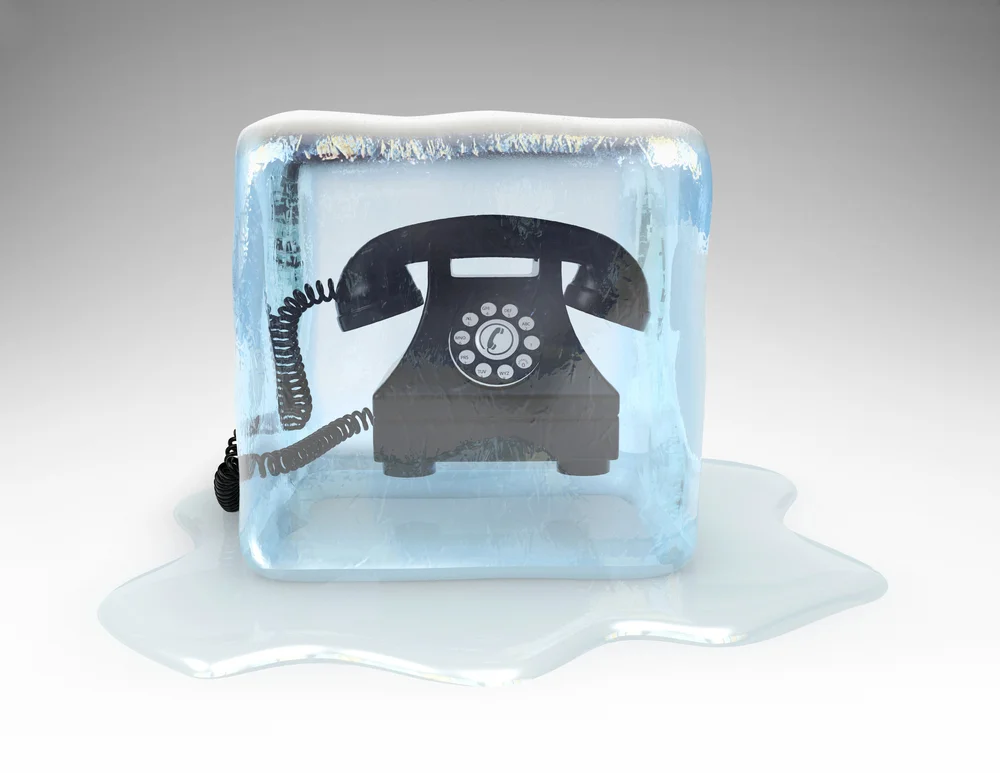In the ever-evolving landscape of sales, there’s one age-old technique that has often been met with skepticism and apprehension: cold calling. It’s time to challenge the negative perception that surrounds this powerful tool and harness its remarkable potential for personal sales success. In this guide, we’ll explore how you can transform cold calling into a dynamic and effective sales strategy that not only yields results but also leaves a lasting positive impression.
Cold Calling Introduction
Cold calling is a sales solicitation technique where businesses reach out to prospective customers who have had no prior interaction with the sales representative. Although it traditionally involved phone-based conversations, cold calling now encompasses various methods, including door-to-door interactions. In today’s digital age, where unknown numbers are often associated with scams, businesses have evolved to use warm calling, which involves reaching out to potential customers through lead generation efforts. While the term “cold calling” may have a negative connotation, it is far from dead. With the right approach and techniques, cold calling can still be an effective method for customer acquisition.
Understanding Cold Calling
Cold calling is an integral part of customer acquisition, especially for newly established companies. Although it boasts a relatively lower success rate compared to other sales tactics, there are ways to enhance your team’s cold-calling techniques without overburdening your sales representatives. Let’s explore some key strategies to increase your cold-calling success.

Timing Matters: To maximize the effectiveness of cold calls, it’s crucial to choose the right time. Research suggests that Wednesdays and Thursdays are the optimal days to call prospects. These days tend to be less hectic, allowing you to catch potential customers when they are more relaxed and receptive. Additionally, focus on specific time slots, such as 10 am–11 am and 4 pm–5 pm, as they are considered the “golden hours” when people are more likely to engage in a conversation.
Diversify Your Approach: Not all prospects are receptive to cold calls, so it’s essential to diversify your sales team’s focus. By designating specific days and times for cold calls, you provide your team with opportunities to build relationships with warmer prospects who may not require a cold call approach.
Effective Cold Calling Techniques
While every skilled cold caller develops their unique style, certain techniques can help you find your footing and improve your success rate:

- Embrace Rejection: Rejection is an inherent part of the sales industry, and it’s important to accept it. Instead of fixating on finding the most likely prospect, work through your entire prospect list. While your rejection rate may increase, so will your number of successes. Consider using a CRM dialer to streamline your calls and increase efficiency.
- Patience is Key: Understand that people need time to make decisions, especially in today’s information-rich environment. The chances of converting a prospect on the first call are minimal. Focus on moving the prospect to the next stage of the sales pipeline, such as scheduling an appointment or a follow-up, which can lead to a successful outcome.
- Know When to Cut Your Losses: With practice, you can quickly assess whether a prospect is interested and worth pursuing. If a conversation is going nowhere, it’s acceptable to end it. Talking to a prospect you know is not a viable lead is a waste of time for both parties.
- Flexibility with Scripts: While having a script is important, it should not be rigid. Every prospect is unique and responds differently. Adapt your sales style based on the prospect’s energy, vocabulary, and level of directness to keep them engaged.
Strategic Approaches to Cold Calling
In addition to techniques, several strategies should be applied to every cold call:
- Conduct Basic Research: Before making a cold call, gather essential information about the prospect. Check their social media profiles and internal correspondence to identify any prior interactions with your company. Even if there’s no existing connection, research similar prospects and their pain points to provide more than just your product during the conversation.
- Follow Up Persistently: Research shows that 80 percent of sales occur after the fifth contact attempt. Even if a prospect doesn’t immediately commit, send follow-up emails to stay on their radar. Consistent effort over time can yield favorable results in the end.
- Maintain Detailed Records: Keep organized records of your cold calls. Note who you contacted, when you called them, whether they answered if you left a message, and any results or actions that occurred after the call or email. Utilizing a CRM system can help streamline this process.
Sample Cold Calling Scripts
Let’s explore two sample cold calling scripts, one for phone calls and another for cold emails, to understand how experts approach the process:

Cold Phone Call Script:
“Hey, I’m [SALES REP NAME] representing [COMPANY NAME].”
I’m reaching out today because it seems like your organization places a strong emphasis on providing exceptional customer service. At [COMPANY NAME], we share that commitment. We’ve had the privilege of working with companies like [CUSTOMER 1] and [CUSTOMER 2], as evidenced by [INSERT SOCIAL MEDIA PROOF]. These organizations typically experience [RESULTS based on prospect needs] within [TIME] of implementing our solutions.
[PROSPECT’S NAME], I’d love the opportunity to discuss your specific needs and assess your current resources. I also have a suggestion on how we can help you achieve [RESULT]. Please feel free to call me back at [NUMBER] at your convenience, or you can simply respond to the follow-up email I’ll be sending. Thank you!”
Cold Email Script:
“Hi [NAME OF PROSPECT],
I noticed your name mentioned on [SOURCE] and was curious if you could assist me. I have a solution for [INSERT INDUSTRY PROBLEM OR PAIN POINT] that I believe [COMPANY NAME] could greatly benefit from. However, I’m having difficulty connecting with the right person.
Could you please direct me to the individual responsible for addressing this opportunity, and how may I reach them?
Your time is greatly appreciated.
[INSERT EMAIL SIGNATURE]”
Cold Calling Statistics and Insights
Understanding the effectiveness of cold calling requires considering relevant statistics:

Cold Calling and Customers:
Although it carries negative associations, not all buyers hold a universally negative view of cold calling.
- 75 percent of potential clients have participated in an event or arranged a meeting as a result of receiving a cold email or call.
- 82 percent of buyers are willing to accept meetings with salespeople who reach out to them via cold calls.
- 57 percent of C-level buyers and VPs prefer cold calling as their initial contact method.
- 69 percent of buyers have accepted phone calls from new providers in the past year.
While these statistics indicate a level of receptiveness to cold calling, they also highlight that the quality of the call and the ability to progress the sale are critical factors.
Cold Calling Success Rates:
- On average, it takes eight call attempts to reach a general prospect due to missed calls and inconvenient timings.
- Only 28 percent of cold calls are answered, while 55 percent go unanswered, and 17 percent lead to non-working numbers.
- An average of 1.5 hours of daily cold calling over five days results in one appointment or referral, considered a positive outcome.
- 80 percent of calls go to voicemail, and sales reps are often unprepared to leave compelling voicemail messages.
These statistics underline the challenges and efforts required for successful cold calling. The return on investment must outweigh the cost of labor to justify its continued use.
Is Cold Calling Dead?
In the 21st century, cold calling is not dead, but it should no longer be the primary prospecting tool for businesses. To effectively use cold calling in the modern era, it’s crucial to adapt to the current culture and employ the right strategies. Cold calling has evolved into a new era, where it focuses on informing prospects about solutions to their problems and guiding them to the next stage in the sales pipeline. The key is to warm up the customer rather than aiming for an immediate sale.
Conclusion
Cold calling remains a valuable tool in the arsenal of sales strategies, but it must be approached with the right techniques and strategies. By understanding the best times to call, embracing rejection, and maintaining flexibility in scripts, businesses can increase their cold-calling success rates. Additionally, conducting research, persistent follow-ups, and meticulous record-keeping are essential for effective cold-calling campaigns. While cold calling may not be the sole method of customer acquisition, when executed correctly, it can yield positive results and contribute to long-term sales success.






1 Comment
1″‘`–